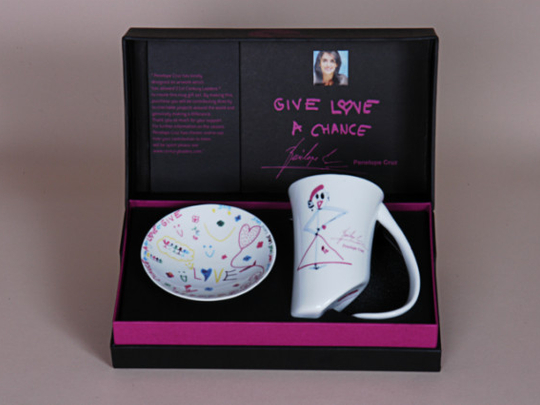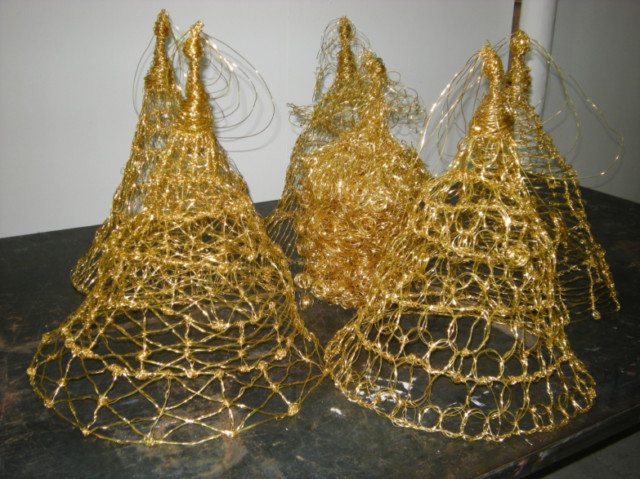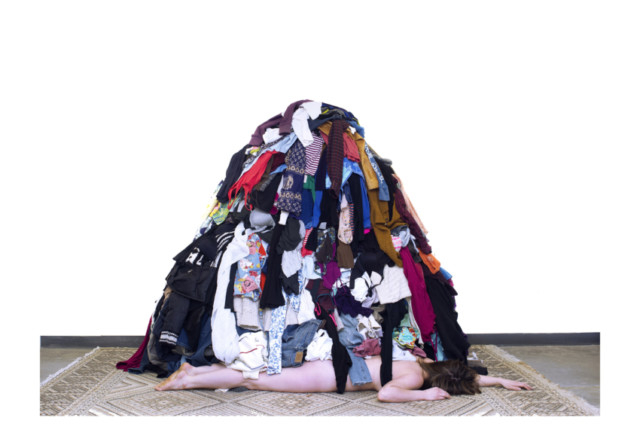
Empty 10, in collaboration with 1x1 Art gallery, is presenting “10”, a group show featuring multimedia works by ten contemporary women artists of different nationalities. The artists have addressed various issues related to their social, political and cultural environment.
Emirati artist Laila Juma has focused on one of the most special days in a woman’s life — her wedding day. Her metal-wire sculptures of brides invite viewers to look beyond the glamour and glitz of a wedding. “We all see the lavish celebrations of a wedding and the effort the bride has made to look her best. But do we know the feelings and conflicts she hides behind her smile as she enters into this important relationship in her life?” she asks. On the other hand, Dubai-based Italian-Lebanese artist Cristiana de Marchi’s work is about building a relationship with the city. Her photographic series, titled “Dubai Walls”, features graffiti-covered walls in Satwa, to which she has added her personal touch by embroidering certain words and symbols. “The people who wrote these words have left a trace of themselves on these walls, and through my pictures and my embroidered messages on the same walls, I want to interact with them and build a relationship with this city,” she says.
German artist Carolin Kropff’s collages, named after Milton’s epic work “Paradise Lost”, are derived from two major paintings that she began in 2011. Through these works she introspects on her own practice as well as her perspective on painting in general. In contrast, American artist Corrina Mehiel’s video and photographic works “All the Clothes” is the result of a series of clothing-swap events she organised in her community, where people were invited to exchange clothes they no longer used for different ones. Her light-hearted photographs and video of herself covered with a mountain of unwanted clothes explore her relationship with her own clothes and with the leftovers at the swaps.
The exhibition features six Indian artists with very different practices. Lavanya Mani is known for incorporating elements of textile dyeing, printing and embroidery in her work, especially traditional Indian crafts such as “kalamakari”. Her embroidered fabric artwork, titled “Incy Wincy Spider”, explores the role of textiles in the history of colonial trade, the establishment of colonialism and the economics of British imperialism in India.
Simrin Mehra-Agarwal also looks at Indian history, but through the prism of her own family history. The artist belongs to the royal Jhargram dynasty and her “Hierarchy” series examines the history of the Indian royalty — its past grandeur and decline, and its transition from the medieval to the postcolonial era, and from monarchy to democracy. In this show, she looks at the changing face of Indian women through an assemblage of light boxes featuring photographs of four generations of women from her own family. Through these accomplished, progressive women, she documents changing times, customs and values in Indian society.
Shivani Agarwal’s work is also about change. She uses paintings, photographic images and multiple canvases to capture changing moments and feelings in her series “Transient Threads”. “The red thread in my images is a metaphor for the transient nature of things, people, situations and emotions. It entangles, binds, takes on different forms around different objects and changes constantly to depict the dichotomy of attachment and separation, bondage and freedom. I am trying to gather our ever-changing thoughts and feelings and to knit them into a story so that we can deal with them and preserve them,” she says.
Mithu Sen’s bold artworks tackle issues of gender, sexuality and societal roles. Her grisly, metaphorical watercolours on paper, titled “Unearthly Narratives”, juxtapose desire with violence and express male and female perspectives of pleasure to talk about repressed emotions and concealed expressions of self. In contrast, Parul Thacker’s work has a spiritual quality, and her mystical installations explore the universe — both within and without. The artist uses materials such as gauze, silk and nylon thread; copper wire, paper and plastic tubes; and holy ash, semi-precious stones, and crystals sourced from remote Himalayan caves. “I believe that matter has spirit and I want to make inert materials live through my work,” she says. But, Prajakta Palav Aher is more down to earth and finds inspiration in the mundane details of everyday life in middle-class homes in India. Her collages are made from layers of laser-cut paper sheets, Fevicol, dried paint scraped from her palette, varnish and glitter. “I am an optimist and try to arrange the clutter of life,” she says.
Also on display at the exhibition is a newly launched collection of ceramics collector’s pieces featuring exclusive artworks depicting messages and symbols of hope by celebrities such as Penelope Cruz, Sir Roger Moore, George Clooney, Paul McCartney and many others. Known as the “Whatever It Takes” collection, this is a unique art-inspired charity campaign launched by 21st Century Leaders Foundation. Over 644 world figures including royalty, Nobel laureates, business leaders, sportspersons, performers, fashion designers and writers have donated their artworks in a pledge to do “Whatever It Takes” to address various issues of the 21st century.
Jyoti Kalsi is an arts enthusiast based in Dubai.
10 will run at Empty 10, Al Quoz, until June 21.




